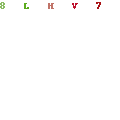 |
Monday, February 12, 2007
It very important to properly care for yourself during radiation for breast cancer. Keep in mind that after radiation you could feel fatigued for up to six weeks. Sleep as much as you like during this time – one thing you really need is your rest.
Also, make sure after radiation that you wear a comfortable bra. Making sure your bra fits properly and doesn’t rub in any way is all part of good care for yourself during radiation for breast cancer. If a part of your bra rubs place a soft cloth between the bra and your skin.
Weight loss can be a problem after radiation treatment. In order to properly care for yourself during radiation for breast cancer make sure you eat a balanced diet. This will help you to avoid weight loss and keep your energy levels as high as possible.
Keep the skin fold area under your breast clean and talk to your doctor before using any powders, lotions, deodorants or perfumes. As part of your care for yourself during breast cancer radiation you need to make sure you are not using any products that might react with your skin at this time or do something to affect the radiation treatment in any way. Because of this it is best to avoid deodorants. Deodorants contain magnesium, and this can inhibit the effectiveness of the radiation treatment. To avoid reactions with the treated area, also avoid starching your clothes.
As part of care for yourself during radiation for breast cancer bathe the treated area in lukewarm water. This is because hot and cold water can damage your skin.
 |
Sunday, February 04, 2007
Who would have thought that a technology for detecting breast cancer used today actually had its’ roots dating back to 480 B.C.? Digital Infrared Thermal Imaging (DITI) is a fairly new technology that represents a practice that was once used by Hippocrates. This technology is based on a technique that Hippocrates would use as he spread mud over his patients and then watched to see which areas dried first. It was in those places on the body that could show a disease.
It wasn’t until 1957 that the first modern application of thermography came into existence when a Canadian doctor discovered that the skin temperature over a breast tumor was higher than that of healthy tissue. By 1982, the Food and Drug Administration approved thermography and classified it as an additional diagnostic tool for the detection of breast cancer. However, DITI was introduced as a diagnostic tool before strict protocols were established for both the technicians who performed the scans and the doctors who interpreted the scans. Shortly after its initial beginnings, DITI fell out of favor as a diagnostic tool in the medical community.
There are now stringent protocols both for testing and interpreting. Perhaps due to these guidelines, thermography (as with all digital technology) has exploded in its technique and capabilities. Thermal cameras detect heat given off by the body and display it as a picture on a computer monitor. These images are unique to the person and they remain stable over time. It is because of these characteristics that thermal imaging is a valuable and effective screening tool to determine changes that could point to trouble down the road. As we all know, early cancer detection is important to survival.
Another advantage is that, unlike mammography, there is no radiation and no compression of the breast; two significant reasons some women refuse mammography. Thermography measures temperature changes in the body. Tumors create their own blood vessels. Where there are more blood vessels, there is more heat. It is in these areas on the body that the camera detects changes in heat or temperature.
Medical doctors who interpret the breast scans are board certified thermologists.
Thermography can be utilized by women of all ages. It is not limited by breast density and is ideal for women who have had cosmetic or reconstructive surgery. Cancer typically has a 15 year life span from onset to death. Ideally, women should begin thermographic screenings by age 25. A woman diagnosed with breast cancer at age 40 possibly had the cancer as early as age 30. Since most women do not have a mammogram until age 40, there is a critical time period from age 25 to 39 that thermography could be extremely beneficial.
Thermography does not replace mammography. However, it is an additional tool that is available to women. By combining both technologies, the detection rate increases to 95-98%, surpassing either technology as a stand-alone therapy.
Thermographic screening is not covered by most insurance companies but is surprisingly affordable for most people. For more information or to find a certified clinic in your area, go to www.proactivehealthonline.com.
Writer: Brenda Witt


 posted by Mohd Firdaus at 8:21 AM
posted by Mohd Firdaus at 8:21 AM